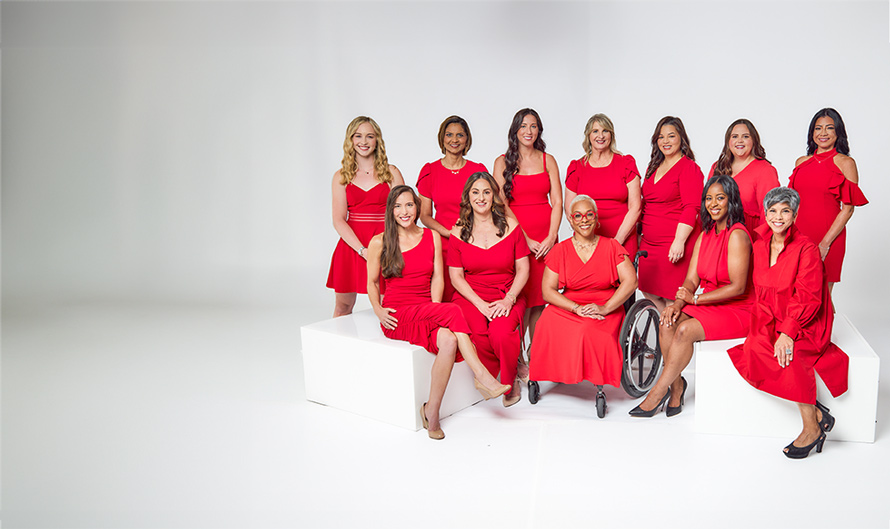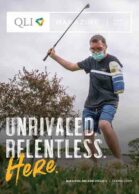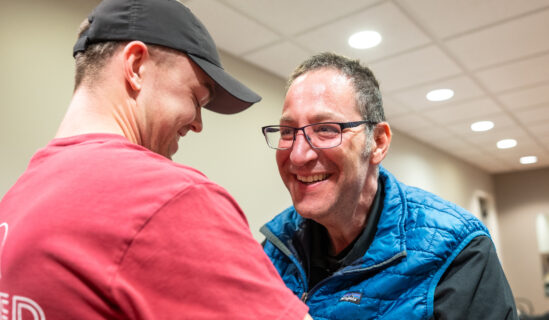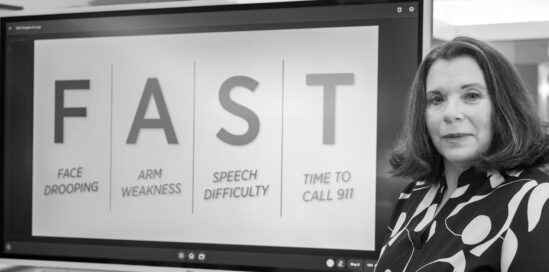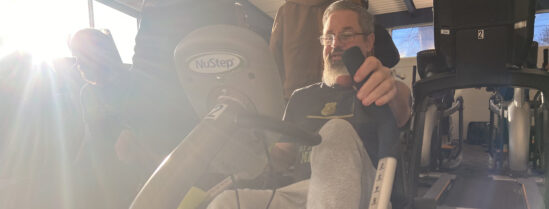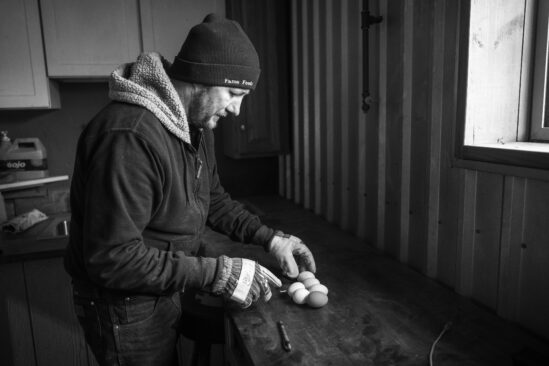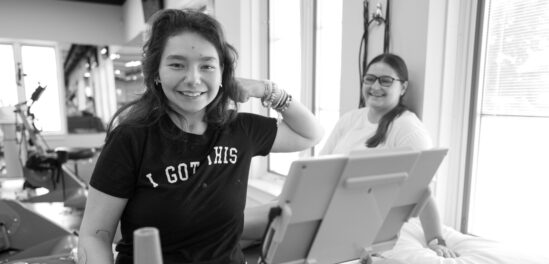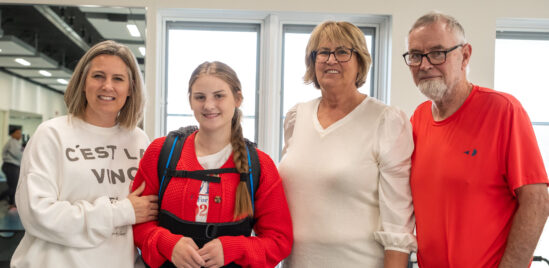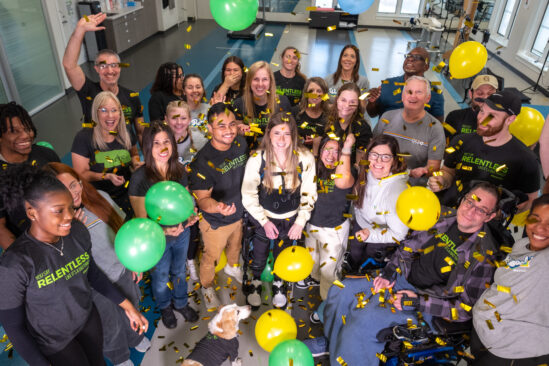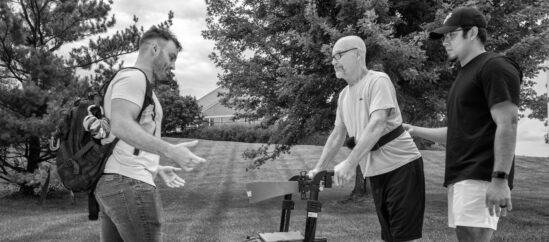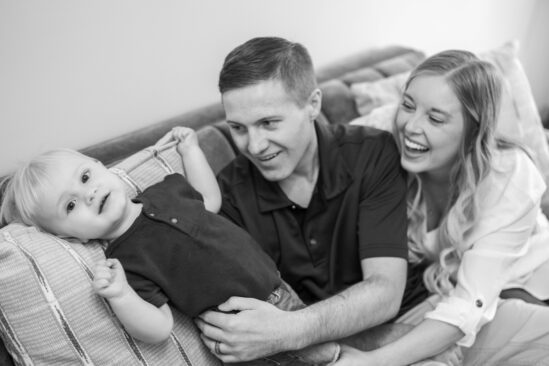Photos provided courtesy of the American Heart Association and Dr. Dipika Aggarwal
It’s something I often wonder with the stories I work on. How? Specifically, how does a body, mind, and spirit recover after a catastrophic injury? We know the term—neuroplasticity, and it is digestible after some thought, that the neurons can rebuild pathways lost after an injury. Our brain grows, and the body readapts, thereby recovering. I refer to the experts on our clinical team to better understand this, and they are very able to explain and help all of us understand, but it is one thing to hear about it, and another to see it with your own eyes. As with any recovery, neuroplasticity can happen at any time. For some, given a month or two of post-acute rehabilitation, anyone observing can see the changes. For others, it could be nearly a year. Or more. When it comes to the efficiency of neuroplasticity and recovery in general, an obvious factor is the severity of injury and prognosis, which brings its list of odds and probabilities.
Yet, you know it when you see it—something remarkable and special. When a client rises above the fray and achieves something that makes you check yourself to make sure it is real. It’s a pleasure and an honor to witness and so many of these translate to readymade stories. It’s another thing to write about someone’s journey when you weren’t there to witness it, but as I heard more about Dipika Aggarwal, a former client who completed her inpatient rehabilitation for a stroke in 2020, in the crux of the pandemic, I wanted to communicate it, to try to capture it, because it’s a journey I was inspired to look further into, to expand my understanding of what we do at QLI.
Her incredible journey began when she was a child, with a dream and wish. I’m sure we all remember these moments—years away from our adulthood and careers beginning. All our dreams were pipedreams at that stage, some would take years and years of dedication and work to achieve. Dipika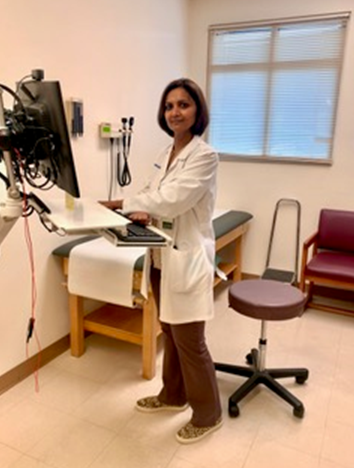 had these dreams, but in a way, they were more than that—these were realities waiting to unfold.
had these dreams, but in a way, they were more than that—these were realities waiting to unfold.
Her dream was to become a doctor and she became one. We hear about how difficult and long the path is—all of it is true and then some. “The weeks were eighty hours at a minimum,” remembers Dipika.
A medical residency is all-encompassing. It cuts and cleaves the weak. The entire process demands a thick skin and intense work ethic, which Dipika held in spades. There is another quality admittedly difficult for anyone in healthcare to keep constantly front of mind—empathy without empty sympathy or pity. Understanding the journey that has led them to her, and what they’ve been through, is not easy.
__
It was a moment that can best be defined as a crossroads.
Dipika had just settled down for a meal at a local diner and a few short days remained before she returned to work. Her career was in its early stages when she got the cancer diagnosis, but through steadfast patience and determination, she completed treatment, looking forward to getting back to the field of neurology. Years prior, during her medical residency, she fell in love with it, knowing neurology was where she wanted to dedicate her career.
It was an opportunity to guide those back to life. Even in the midst of all of this, she was still asking the question—what comes next? The revelation was a waystation between an unfortunate and difficult period of her life to a potential one of promise. Now was the time to have faith in the future. Her perspective, the very holds of life had changed, and Dipika had changed too.
A colleague texted her to check in. Dipika texted back. The words did not make sense. The colleague tried again. So did Dipika. The colleague was able to contact emergency services for her. Though she spent years working with individuals who had a stroke, it was difficult for Dipika to comprehend the same thing was happening to her.
__
She was taken to the very hospital where she worked as a neurologist. Though she has no recollection of it now, she was treated by her colleagues. Individuals she confided in, individuals she trusted in her day-to-day. But her life was in her hands.
Recovery means support, and Dipika’s family was ready to move heaven and earth to make sure she had it. Her parents traveled to the United States from India, settling at QLI’s Family Housing as Dipika was ready to begin her post-acute rehabilitation.
It would also require the support of her clinical and residential teams.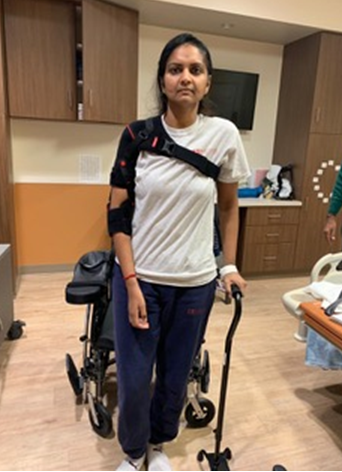
“QLI is the place to be,” she succinctly reflects. Her family and the QLI team surrounded her, lifting Dipika through her strengths but also giving her body and brain time to rest and heal. It can be tempting to run at recovery full bore. Individuals might think that the harder they work, the faster change will happen, but that isn’t always the case, as Dipika soon found to be true.
The period spent at QLI was short-lived, at just about a couple of months. “There were the simple things that still stand out,” says Dipika, “though at the time it was difficult for me to fully process the successes.”
The transition from a wheelchair to walking with a cane. Later, walking without ambulatory support months post-discharge. Developments that are crucial to recovery can’t always be accounted for in terms of a direct timeline.
“I could tell right away that Dipika was a high achieving and bright individual,” notes physical therapist Brad Dexter. “Building endurance was one of her primary concerns.” Dipika could see so clearly in her mind a return to walking the floors and doing the rounds in the University of Kansas Hospital—a fixed goal. “There was still a long road to get there.”
Over the next nine months, Dipika worked with Brad and others at Kintinu for her outpatient telerehabilitation. The focus at this stage was high-intensity gait training. In their sessions, Dipika would work on pushing herself to what is considered a “low zone three or four,” incorporating exercises that built to within 70 to 85% of her maximum heart rate.
Early on, this would be for short periods that then lengthened as time went on, according to research, are crucial for stroke recovery. “Dipika was always thinking about the road in front of her,” Brad reflects. “She’d ask ‘What is the next thing? What do I know about things? How do I move forward?’”
It was a combination of two significant factors that allowed Dipika to flourish at QLI and beyond as she returned full-time to being a neurologist—resilience in her work ethic and the support system around her. Dipika’s resilience came from a functional inspiration point—knowing that she wanted to get back to being a doctor again. It fueled the collaborative approach with a clinician, envisioning what a typical day might look like – the physical demands of a significant time on her feet, which in turn led to programs 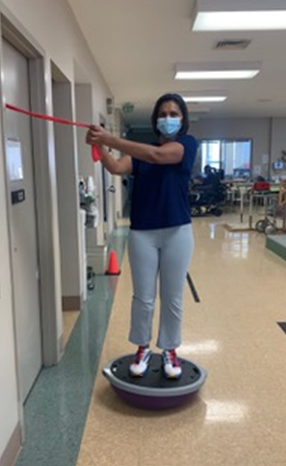 devoted to being able to engage cognitively and intellectually with a work environment.
devoted to being able to engage cognitively and intellectually with a work environment.
This included working with speech therapists to synthesize information in a meaningful manner, not just work-related information to be communicated to colleagues, but crucial dialogue with patients and their families.
To center Dipika on the goal of returning to work, it wasn’t just a matter of a traditional day filled with the kinds of therapies one might expect. “It was a whole combination of the environment at QLI that lifted me,” remembers Dipika. “I had psychological and mental health support and the ability to meet individuals in the Omaha community who were stroke survivors.”
__
There are always takeaways, new perspectives, and the things you and others will carry moving forward. “I understood empathy with my patients before,” notes Dipika, “but it is so much more than simply treating a patient.” A neurologist may see many patients in one day. They treat as they know how, and offer sage advice.
The patient returns home after the appointment having had the technical and medical concerns addressed but the real world often presents a myriad of challenges. Emotions following recovery abound. Relationships are changed. Things are not always discussed thoroughly in a 15-30 minute physician appointment.
Dipika understands that now. “Treatment entails so much,” she says. “It’s providing the patient with information, giving them resources to understand how their life may be affected.”
Just as important is “to encourage them to take care of their mental health, which is just as important as taking care of the brain and body.”
Dipika’s path was confirmed and affirmed. To check in on them, and see how they are doing. To move forward and to support them on their path. The work through stroke pushed her to a limit, yes, but it revealed a whole new facet to her profession, through the levels of care she received during her recovery.
She can now offer the same for her patients.
Empathy. Not sympathy. Not pity.
It moves forward, it understands.
Dipika is there as a figure for others.
__
In the photo shoot, they don red and vibrant clothes.
They stare intently as if the tiny camera lends every fellow survivor who shared the path with them.
They’re on the way now—the American Heart Association’s Go Red for Women® Heart Disease and Stroke Survivor Class of 2024.
They are on a path to educating others, building a connection with them, to showing the world just a little bit more about their journeys.
Who they are.
Where they’re coming from.
Why they are.
Dipika stands proud in the group as a measured success, taking immense support and turning it into something greater, something truer, at the heart of the matter and the moment.
Dipika, the story of which will continue to resonate for a long time to come.
It will be heard.
A time for change and growth.
The place to be to move forward and reach a new height. Becoming
Greater.
Stronger.
Herself.
